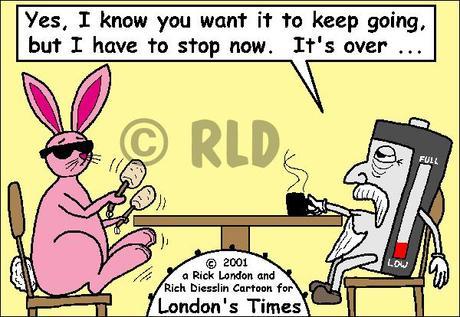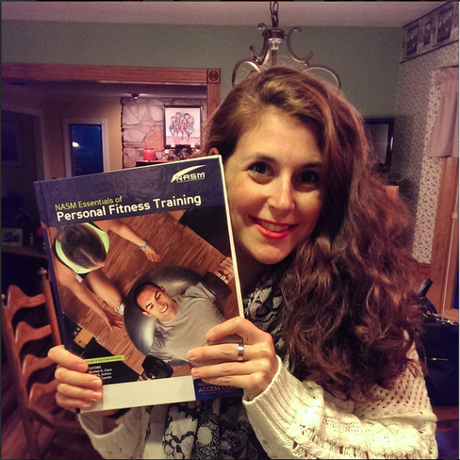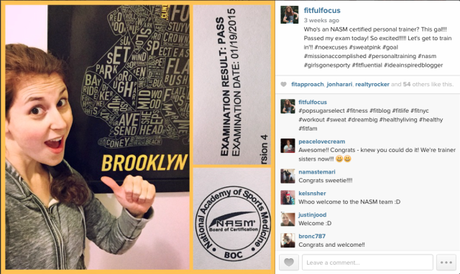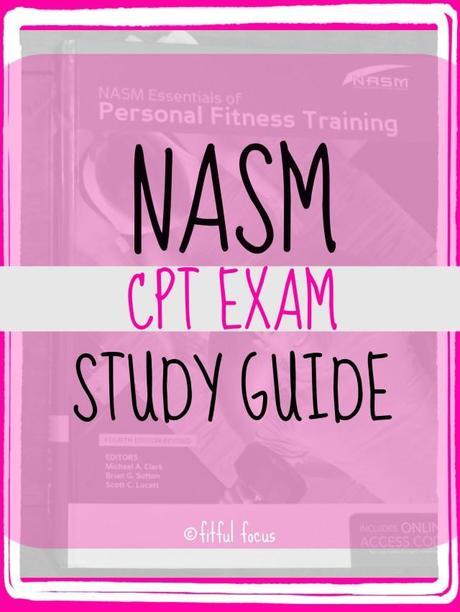These past few months have been a whirlwind. I feel like I’ve been go go going like the Energizer Bunny.

Why, you ask? Because of this guy:

I work full time and run this blog, so squeezing in studying for the NASM exam was tough. Most days, I resorted to waking up and getting to the gym an hour earlier than usual, then hung out at a Starbucks for an hour to study before work. If you don’t have time, make time right? Well it all paid off because, (Spoiler Alert) I passed! Ok, not really a spoiler because I announced it here and all over social media almost immediately following the exam. So darn excited!

I’m still working on how I’m going to put this new cert to good use (lots of good ideas abrewin’), but I promised you all a post about how I studied for and passed the exam. Sooooo as promised, I bring you the NASM CPT Exam Study Guide.

NOTE: NASM comes out with new text book editions every now and then. This guide is based off of the NASM CPT 4 Exam.
- First things first (I’m the realist), get your materials. I ordered the CPT Self Study with Live Workshop. This came with a text book, online study materials, digital flashcards, and a live workshop (which I’m attending in a few weeks). I also got a notebook and index cards on my own.
- Set a timeline. NASM gives you 6 months to study and take the exam. I got my materials mid September and gave myself a mid January deadline. Why only give myself 4 months when I could take 6? I didn’t want to push it off to the last second or forget things I learned in the beginning. Also, this way I knew I had more time if I really needed it – always good to have a back up plan. I also knew I’d have two weeks off work at the end of December and wanted to use that time to really hunker down, cram, and polish off my studying.
- Make a plan. For each chapter, I read through and highlighted. Then I watched the online videos and did the activities for the chapter. Next, I went back through the text and took notes. After the notes, I made flashcards. Everyday on my commute to work, I studied said flash cards. Seriously, any moment I wasn’t working or blogging, I was studying. I studied on the train. I studied in the rain. I studied while I ate. I studied early and then late. I studied… ok… you get it.
- Practice, practice, practice. Once I felt fairly comfortable with a chapter, I took the practice quiz the text book company provided. These were very helpful in showing me what I knew and what I still needed to work on. I also went back and did all the chapter activities again. Two weeks before the exam, I started taking practice exams. The NASM website has one, and it will change up a few questions each time you take it. Be careful of taking this too many times as you may start to memorize answers vs. really learning them, but the practice exam will give you a good sense of how things will be phrased. There were even a few questions from the practice test (4 or 5 maybe) that were on the real exam.
- Have confidence. I was SO nervous going into the exam, but I knew I studied as best I could. Will kept telling me I was over studying, which may be, but hey, I passed! Be confident, try not to overthink, and go with your gut!
A few other things to note:
Exam breakdown (questions per category)
Basic & Applied Sciences – 15
Assessment – 15
Exercise Technique and Training Instruction – 20
Program Design – 20
Nutrition – 12
Client Relations and Behavioral Coaching – 10
Professional Development, Practice, and Responsibility – 8
Research Questions – 20
Total – 120
Exam requirements
You must have a valid CPR/AED certification (don’t forget to bring this with you to the exam!)
Passing = 70/100 (the 20 research questions don’t count toward your score)
Exam format
The exam is multiple choice, and you have 2 hours to complete it. You take the exam on a computer, not with a pen and paper. You can mark questions and go back to change answers. I found this very helpful. As I was taking the exam, I marked any questions I wasn’t 100% sure of. Once I’d gone through all the questions, I went back to all the ones I marked to double check/make any adjustments to my answers before submitting.
You’ll also find out if you passed right then and there. I left the computer lab and went out the front desk. The guy there just said, “Get your stuff from the locker (you can’t bring anything into the exam room with you), and I’ll print something for you.” At this point, my heart was POUNDING. I got my stuff, and went back to the desk. He handed me a piece of paper upside down. He didn’t say anything. I was convinced in that moment that I’d failed and he was just being quiet about it to spare me the embarrassment. With shaking hands, I turned the paper over and… I PASSED!!! O to the M to the G, what a great feeling! I was probably smiling like a crazy fool. They won’t tell you what your score was. I could have gotten a 70. I could have gotten a 100 (HA!). Don’t matta – I passed!
Study Resources
NASM.org
JB Learning (text book company)
Quizlet (an app you can download and make flash cards or use other people’s flash cards)
Things to Focus On
There is a TON of information to learn (understatement of the century). While the below list is by no means the only information you need to learn, I found that these were the most important things to really focus on and know REALLY well. Please take these with a grain of salt as each exam varies (reminder: this is based off of the NASM CPT 4 Exam).
- Names of muscles and locations
- Isolated function of muscles
- OPT Model
- Acute variables for all training concepts (Flexibility, Cardiorespiratory, Core, Balance, Plyometric, Speed/Agility/Quickness, Resistance)
- Example exercises for each training concept and phase (i.e. Balance exercises for a client at the Stabilization level vs. at the Power level)
- Posture and movement assessments
- Common distortion patterns (which muscles are short, which are long, altered joint mechanics, and possible injuries)
- Performance assessments
- Reciprocal inhibition vs. autogenic inhibition
- Progression continuum
- Healthy and unhealthy ranges for BMI, blood pressure, and cholesterol
- Straight Percentage Method (this is the only formula you need to know)
Now, stop! It’s study time! (Anybody doing the Hammer dance? Anyone? Bueller?) If you are thinking of taking the NASM cPT exam, feel free to shout with any questions! Post them in the comments or shoot me an email.
Thinking of becoming a @NASM personal trainer? Check out this great study guide! #personaltraining
Click To Tweet
I’m doing the Live Workshop on March 1st, so stay tuned for a recap of my experience!
Now, what are you waiting for, get to studying before I get out my ruler and whip you into shape… JUST KIDDING. I’d never hit you. You’re too pretty!
Let’s Chat:
Have you or are you thinking about taking the NASM cPT exam?
What’s the toughest thing you’ve ever studied for?
Best test experience – and go!
